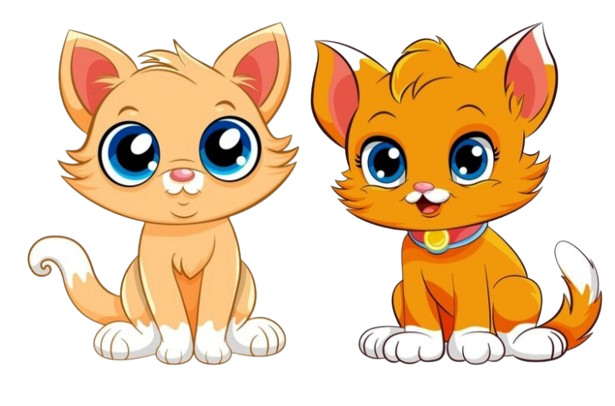Ceylon Cat
History / Profile
The Ceylon cat breed comes from the island of Sri Lanka
(formerly Ceylon), which is clear from the name. However, in the official
registers, it is indicated that the breed originates from Italy. This conflict
occurred because the Italian veterinarian Paolo Pelegatta visited the island in
1984, finding these interesting and unusual cats there.
He was struck by the mark on the muzzle, which looked like a
pattern that adorned the hood of a cobra. After asking the locals, the
veterinarian learned that these cats have long been revered as sacred animals,
favorites of the Buddha, and it was he who left a mark on their faces.
In addition, these animals liked Paolo for their grace and
beauty, as well as endurance, courage, ingenuity, and, of course, affectionate
character. He decided to bring a few individuals with him in order to, so to
speak, acquaint Europe with this amazing breed. After 4 years, Paolo Pelegatta,
with the help of professional breeders and felinologists, created an ideal
standard by selection.
In 1993, the breed standard was officially recognized by the
WCF (World Cat Federation). Unfortunately, on the territory of the CIS
countries, the Ceylon cat is little known, but its popularity is growing from
year to year.
Characteristics of the Ceylon Cat breed
Adaptability 08/10
Attachment to the
family 10/10
Gaming
activity 09/10
intelligence 10/10
General
health 10/10
Wool
fallout 04/10
Friendliness to
children 10/10
Friendly to
dogs 10/10
Love of meows 05/10
Ceylon Cats Breed Information
|
Country of origin |
Sri Lanka Italy |
|
Lifetime |
13-18 years |
|
Size |
average |
|
Weight |
Cats: 3-5 kg, Cats: 2.5-4 kg |
|
Coat type |
shorthair |
|
Color |
from sand to gold with a black pattern and distinct markings
on the head |
|
Lifestyle |
indoors |
Price |
1000 $ |
Description of Ceylon Cat
Active, lively, affectionate, and very affectionate cats,
Ceylon considers themselves as full-fledged members of the family, and not just
a pet. They try to participate in all household chores, at least with their
presence. They are sociable, talkative, make it clear what they want at the
moment, however, they are not capricious and obedient. They have good hunting
instincts, and they can hunt mice.
These are small cats, with short hair, and elegant and
muscular bodies. The legs are strong, slender, the tail is of medium length. The
ears are slightly elongated, medium-sized, the muzzle is wedge-shaped, the eyes
are very expressive. The average life expectancy of these animals is 15-17
years.
Personality
One of the main features of Ceylon cats can be considered
their endless supply of energy and vitality so that they are never bored.
Sometimes it seems that these animals can't just lie idle – they are either
sleeping or trying to find something to do. Moreover, they necessarily try to
involve the owner or favorite people - family members - in their activity. And
therefore, it is extremely good if there is a child in the family, as he will
find in the pet the perfect companion for his children's games.
In turn, the Ceylon cat also needs human attention and will
be extremely happy with children's society, games, and all kinds of
entertainment. Her instincts and brain need constant stimulation, therefore, if
you cannot provide the pet with such conditions, it is better to have other breeds. Since the Ceylon cat will not give you peace. They are very attached to
"their" people, love to spend time with them, and need not only
attention but also approval from the owner and family members.
In addition, these cats do not like to be alone, and for a
long time to be torn away from the owner, this is also important to consider.
In relationships, they always show great affection and love, are very balanced, and have no aggression. They perfectly understand people and their mood, listen
to criticism, and, with due diligence on the part of the owner, they can even
be taught simple commands.
Other pets get along normally, however, it should be
understood that they have a hunting instinct, which means that the presence of
birds or rodents in the house, for example, a guinea pig or a parrot, is not
the best idea. Strangers are treated with friendliness.
Common diseases
The Ceylon cat breed is in excellent health and does not
suffer from genetic diseases. If the owner will provide the pet with good care,
it is safe to say that he will not have to contact the veterinarian.
How to take care of a
Like any other shorthair cat, Ceylon needs weekly
combing. In addition, you need to bathe the pet every 2 months, trim the claws
every 10 days, clean the ears once a week and clean the eyes of deposits every
1-2 days. In addition, excess vitality requires periodic walking of the pet in
the fresh air, you can on a leash. It will be especially good if you live in a
private house and can provide the cat with free access to the street.




